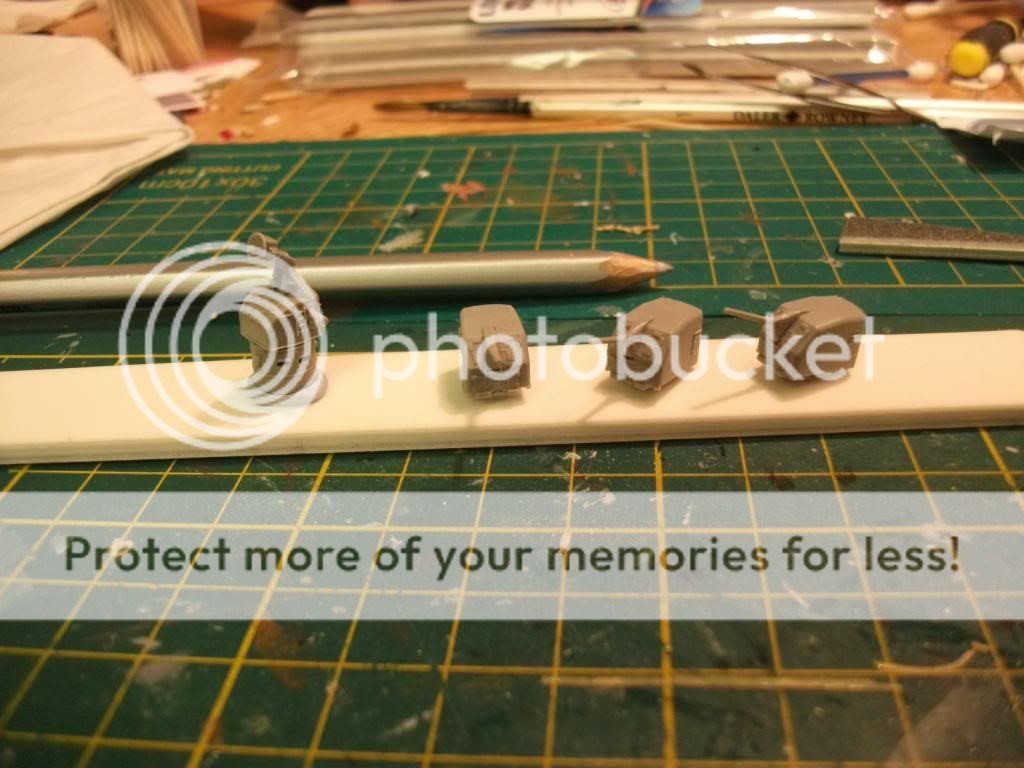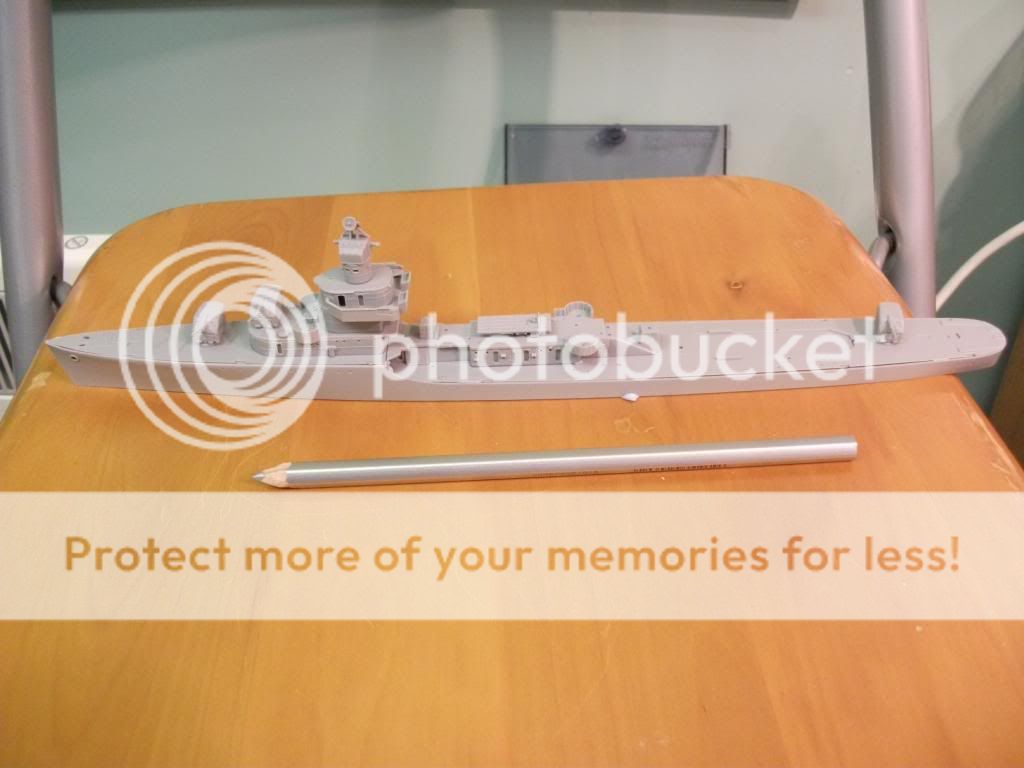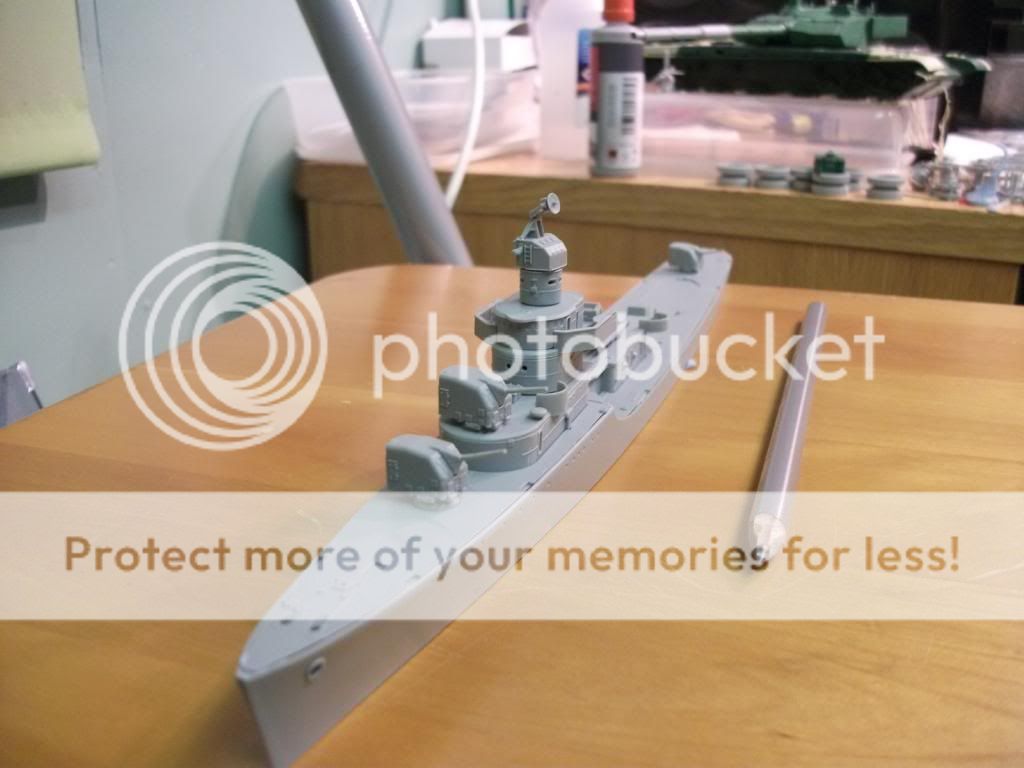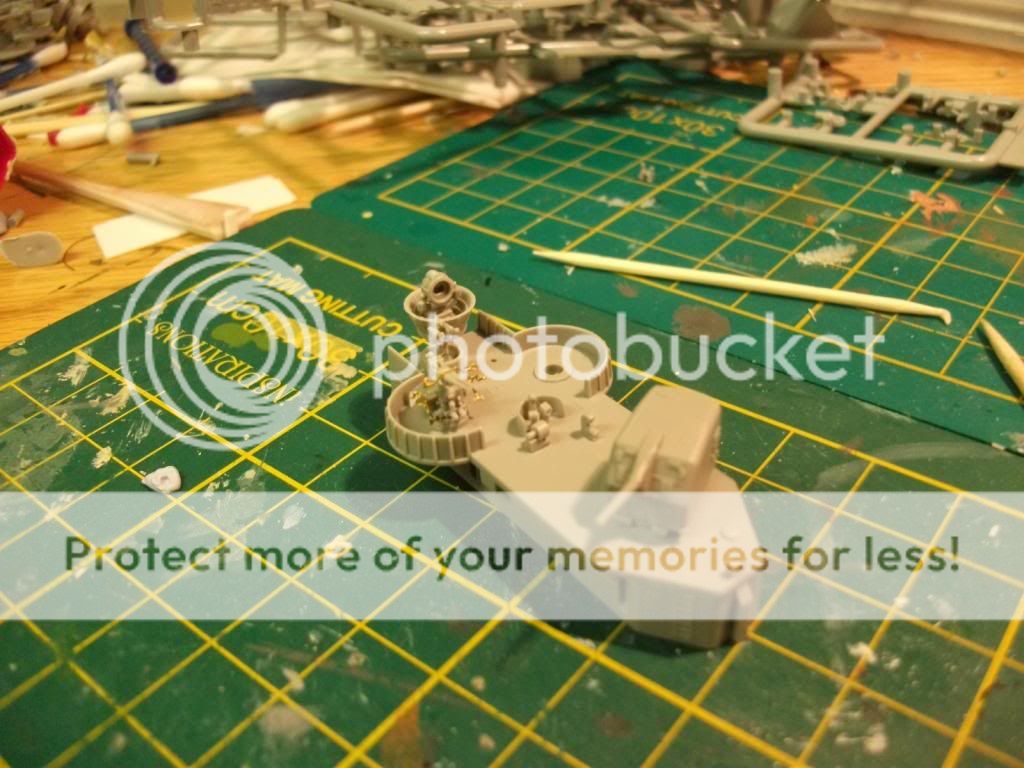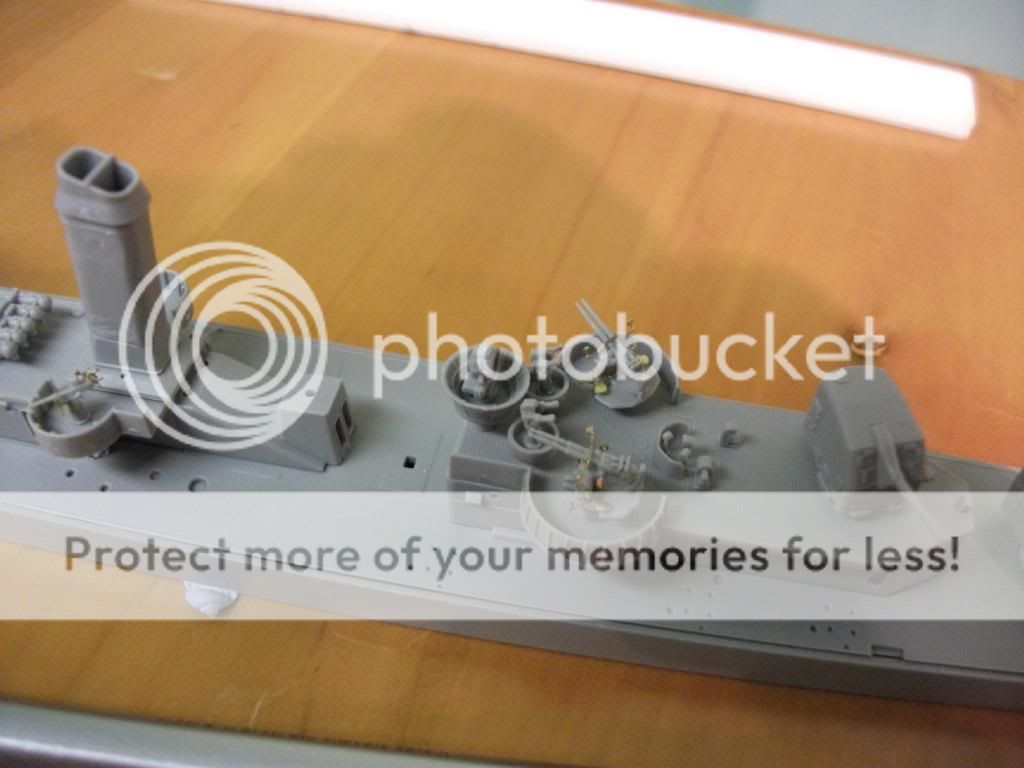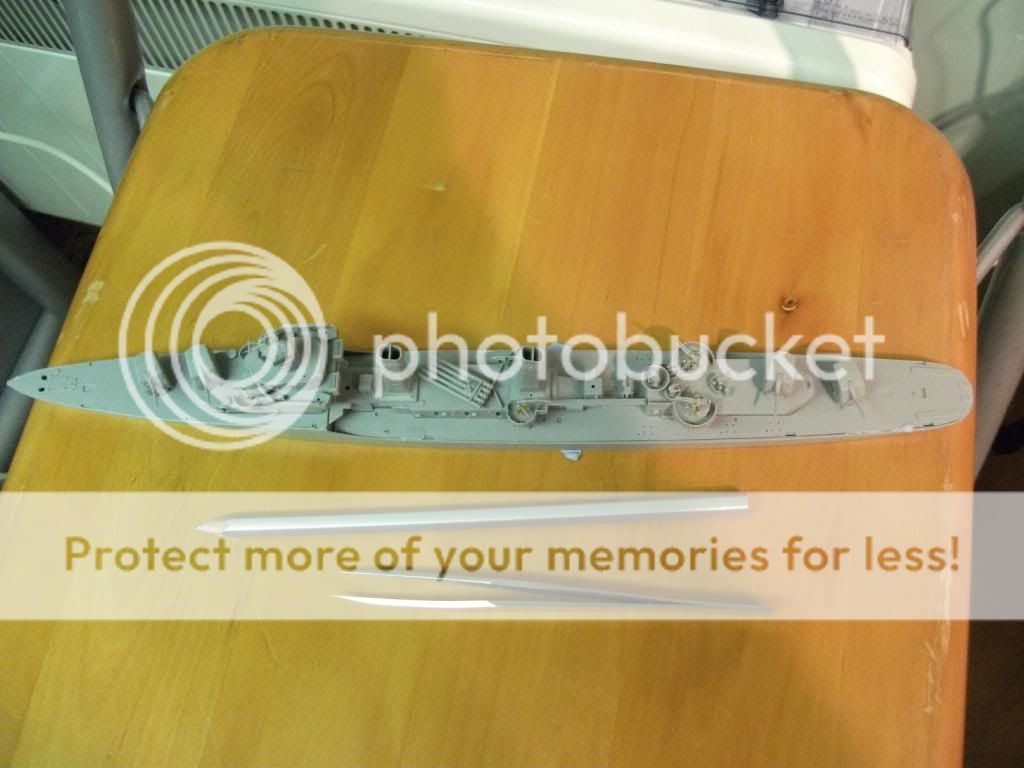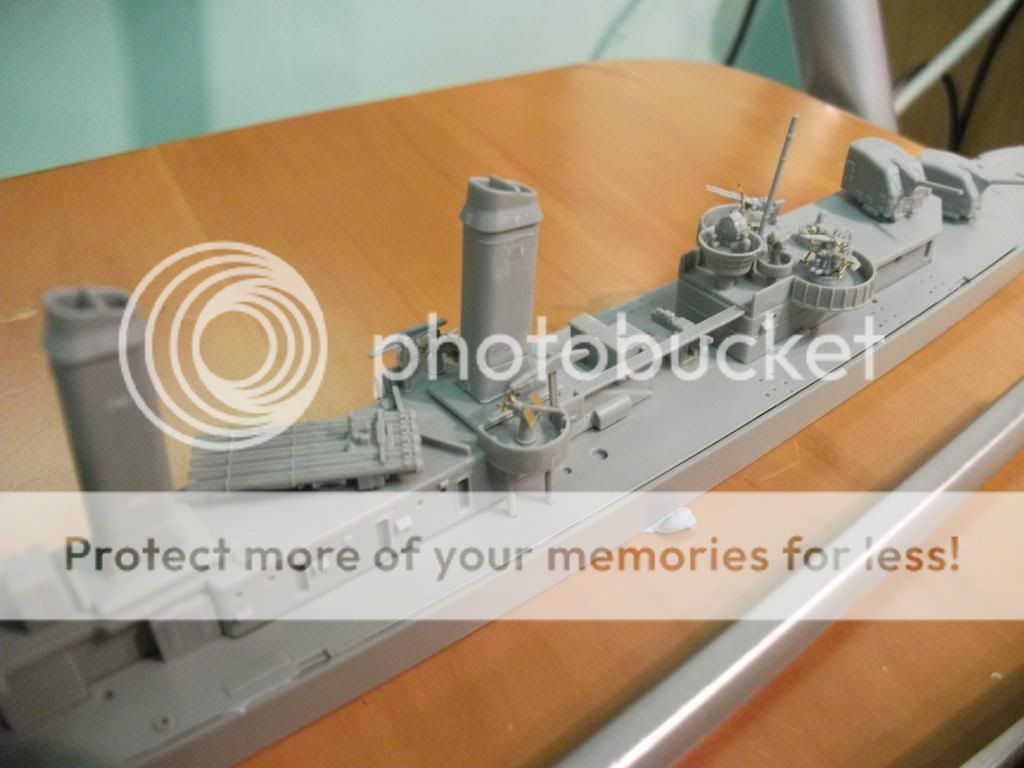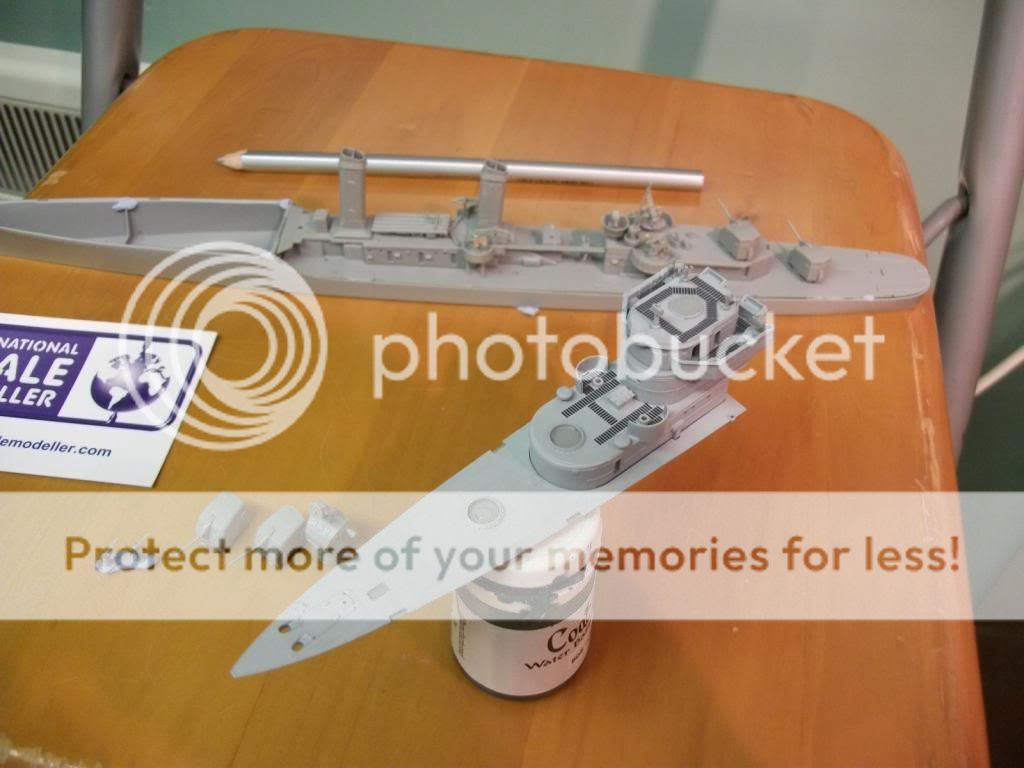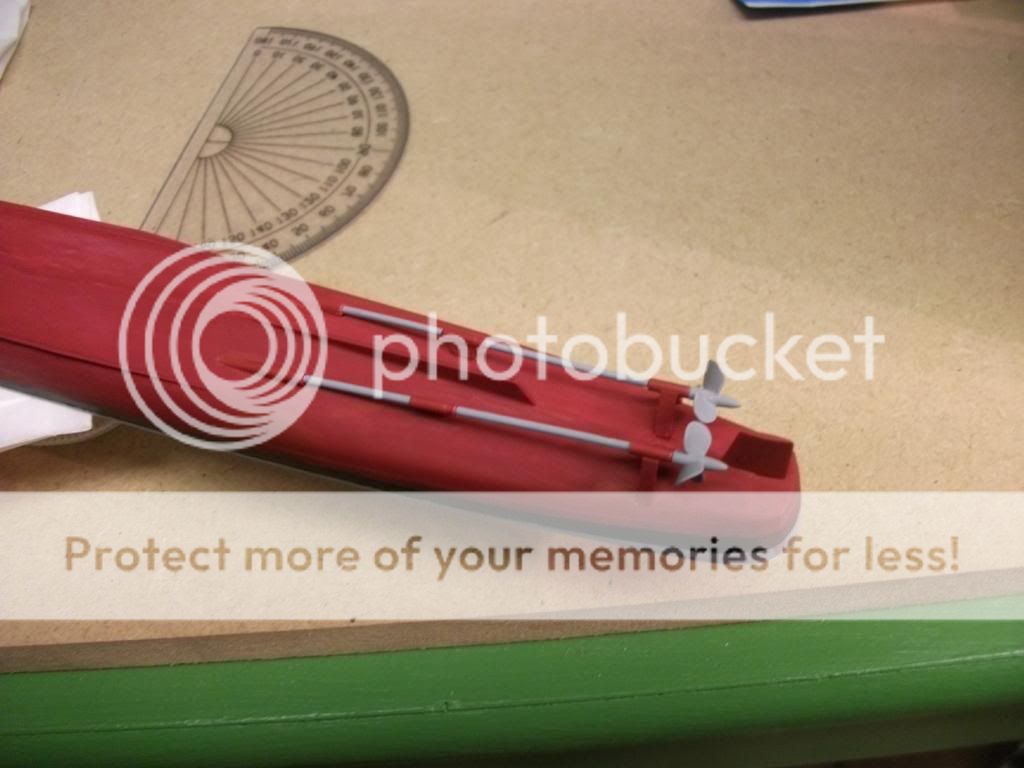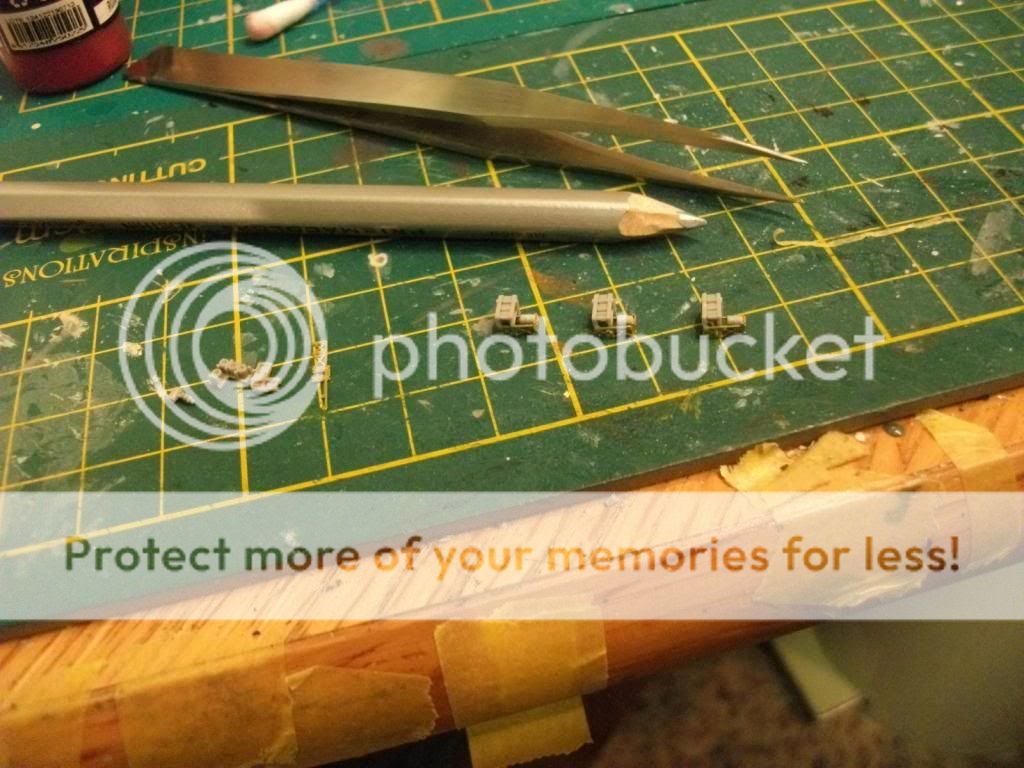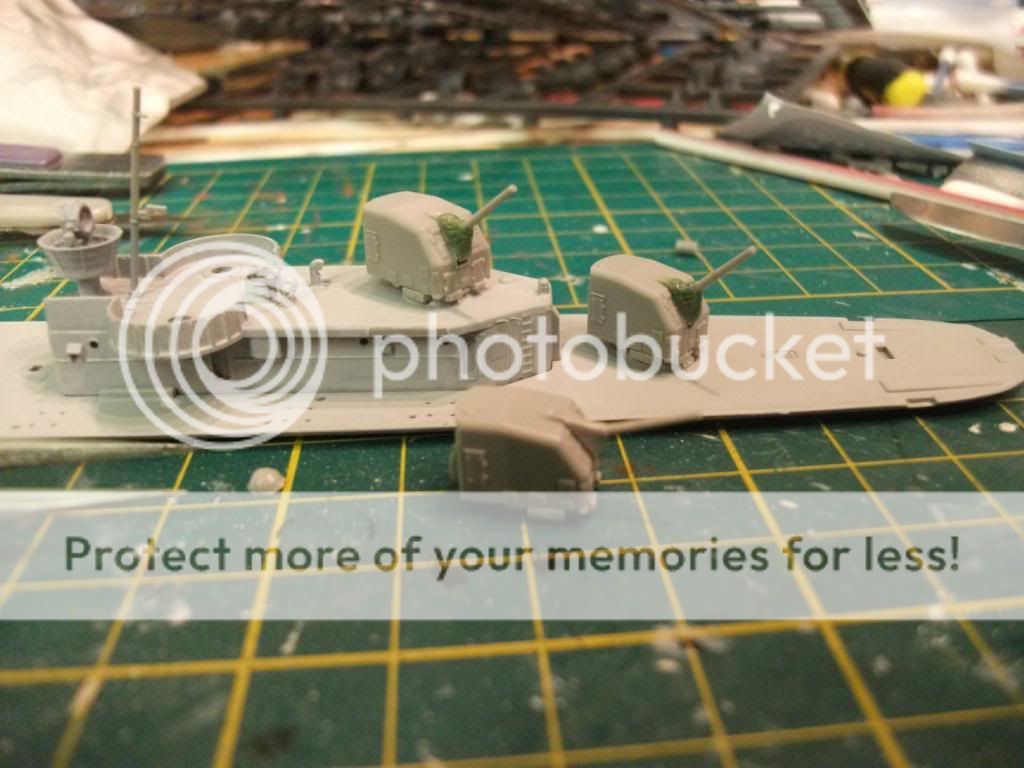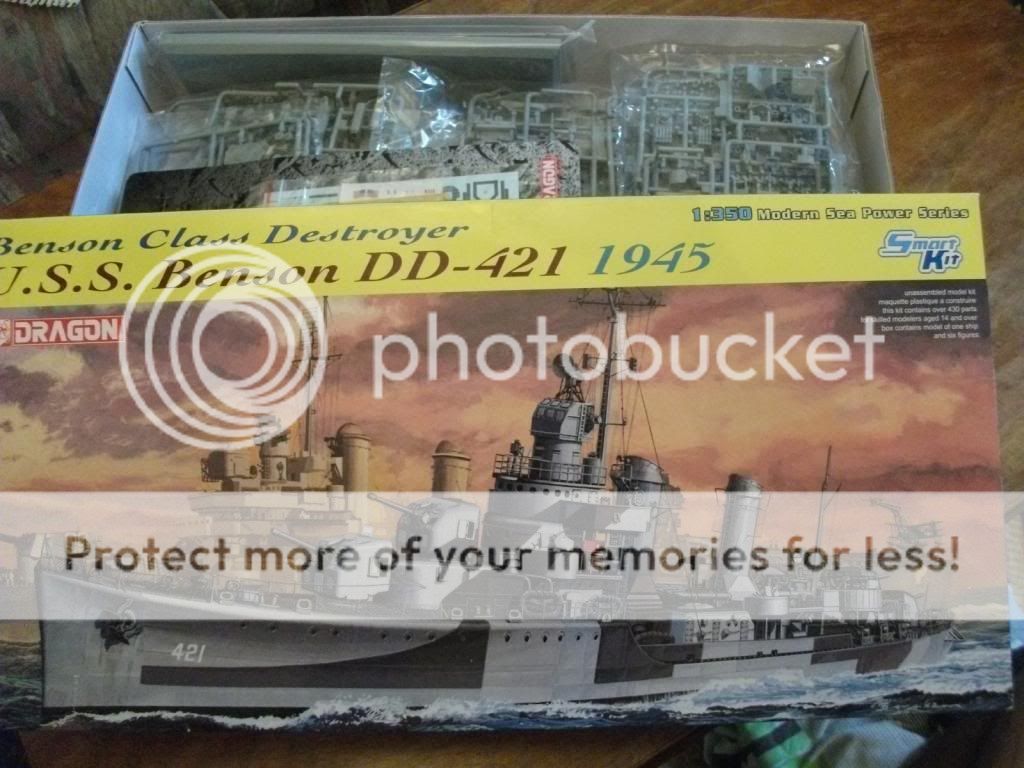
In the course of reading the history below I am sure you will see why I chose to build this ship over the over 29 in the Benson class of American destroyers.

The Benson Class:
As was common with destroyer designs during the war the Benson class was drawn out as an improvement upon the Sims class with 2 stacks (the smoke belching part) and alternating boiler and engine rooms to better survive torpedo hits. Ships in the class were armed with either 5x 5 in (127 mm) DP guns and 5x 21 in (53 cm) torpedo tubes or 4x guns and 10x topedo tubes. 30 vessels were built with only 4 losses sustained. The first ship was constructed in 1938 and the last was decommissioned from US service in 1951 (several vessels would serve on in the Republic of China Navy). In total a combined 117 years of service where given by the class to the United States Navy. The ships gave sterling service during WW2 with a vessel of the class participating in every major campaign.
USS Murphy DD 603
Construction of DD 603 started on 19 May 1941 with the ship launched on 29 April 1942 and commissioned to the navy on 25 July 1942. In October 1942 she took part in Operation Torch the invasion of North Africa. Here she regulated the waves of landing craft ferrying troops to the beach and gave gunfire support. During a bombardment in support of shore forces she was hit in the rear engine room by gunfire from Sherkhi battery with 2 men killed and 25 wounded. After damage control and initial repairs at sea Murphy remained on station before sailing to Boston for permanent repairs.
Her next assignment was the Allied invasion of Sicily in 1943 where she defended naval forces from German and Italian air attacks. After the invasion of Sicily she returned to the United States to escort convoys bound for the UK.
1/3rd lost to the sea
While leaving New York harbour with a convoy of merchant vessels Murphy was unintentionally rammed by the oil tanker SS Bulkoil. The forward third of USS Murphy sank with 36 men, remarkably the rest of the ship was kept afloat and towed to New York Naval Yard for repair which took 7 months with an entirely new bow section fitted to the surviving hull.



Normandy
Returning to active duty she sailed for the south coast of England to support forces on Omaha Beach where her 5 inch guns gave fire support to the beach and breakout forces while also screening the landing area. During the week of the D'day landings she engaged in gun duels with German shore batteries and repelled E-boat attacks.
After Normandy she joined the task force for operation Dragoon the invasion of southern France where her guns aided in further fire support.
In late 1944 USS Murphy joined the USS Quincy to transport President Roosevelt for the conference at The Great Bitter Lake Egypt with King Ibn Saud of Saudi Arabia and his entourage. Both the Quincy and Murphy were modified for their visitors with rugs laid and tents supported to make the Saudi king more comfortable as he had never been onboard a ship or traveled from his homeland.
The leaders aboard USS Quincy:

And aboard Murphy:
http://www.navsource.org/archives/05/0560311.jpg
Following the unusual duty or escorting dignitaries Murphy was dispatched to Okinawa for the remainder of the war. She was decommissioned in 1946 and joined the Atlantic reserve fleet before being sold for scrap in 1972. Of course Murphy's original bow section still remains beneath the waves and was the subject of a documentary titled Destroyer Down.

A colourful wartime history indeed.
Sprue shots and review to come shortly - can't wait to start this kit















